
Learning management systems (LMS) are essential tools for delivering and managing employee training and e-learning programs. Approximately 83% of organizations use an LMS to support their learning initiatives, underscoring the growing reliance on these platforms across industries.
Moodle and Litmos are among the most recognized platforms for their distinct strengths. Moodle is an open-source LMS known for its flexibility, scalability, and strong community support, making it ideal for academic institutions and organizations seeking full control. Litmos, in contrast, is a cloud-based LMS favored by enterprises for its user-friendly interface, built-in content library, and fast deployment.
In this Moodle vs Litmos comparison, we’ll explore key features, pros, and cons to help you decide which LMS suits your learning goals better.
Feature | Moodle | Litmos |
Content Management | Flexible course builder with multimedia, quizzes, forums, and highly customizable | Fast setup with drag-and-drop tools and 98,000+ ready-made courses |
Learner Engagement | Forums, messaging, gamification via plugins; require setup | Built-in gamification, real-time feedback, interactive media |
Reporting & Analytics | Detailed reports, support plugins like LearnerScript | AI-driven insights, automated reports, performance tracking |
Integrations | 2,000+ plugins, open-source, REST APIs, highly customizable | Integrates with Salesforce, Zendesk, GoToTraining; limited by proprietary nature |
Role-Based Dashboards | Role-based dashboards with plugin-based personalization | Excel training for building interactive, data-driven dashboards |
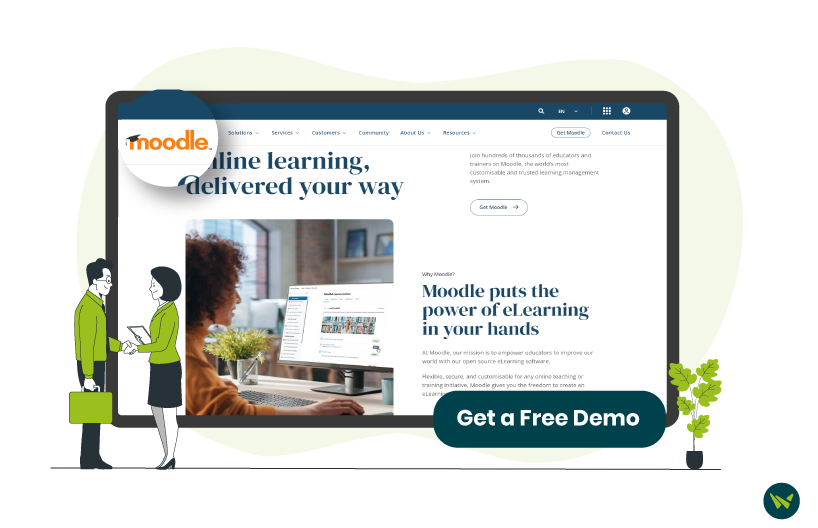
Moodle is a fully customizable, open-source LMS designed to support diverse teaching styles and learner needs. Moodle supports everything from K–12 classrooms to global training programs, offering a flexible platform for blended, remote, or fully online instruction. With the release of Moodle LMS 5.0, educators and administrators benefit from enhancements like a redesigned interface and improved automation tools, which simplify course management and boost overall efficiency. The update gives them more control, allowing them to focus on delivering quality teaching with less complexity.
Unique Features Of Moodle
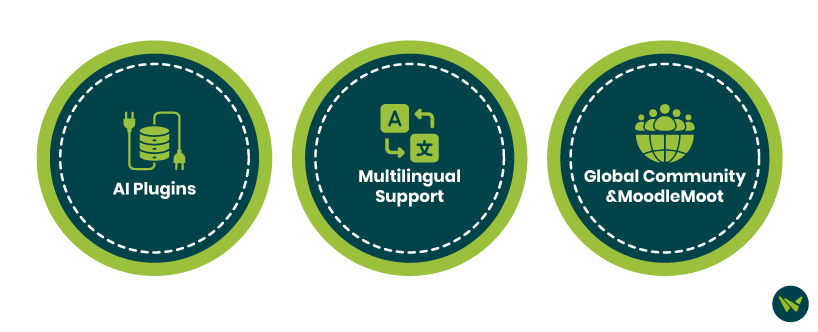
- AI Plugins: A suite of open-source AI plugins enhances Moodle’s adaptability. These include tools for ChatGPT-powered conversations, Dall-E-based image generation, an AI Text-to-Questions Generator for dynamic quizzes, and an AI Text-to-Image tool for visual content creation. Backed by Moodle and aligned with EU standards, these plugins support transparent and future-ready digital learning
- Multilingual Support: Moodle Workplace extends Moodle LMS with features tailored for corporate training. It allows organizations to translate content into over 160+ languages, making it ideal for global teams
- Global Community And MoodleMoot: A worldwide network of educators, developers, and learners drives continuous improvement through collaboration, peer support, and plugins. MoodleMoot conferences further strengthen this spirit by sharing best practices and ideas globally
Pros And Cons Of Moodle
Pros
- Offers a wide range of tools like quizzes, forums, and grading options
- Provides a user-friendly layout for quick access to learning content
- Enables interaction and knowledge-sharing through active community forums
Cons
- Does not save module progress if internet connection is lost during a session
- Flexibility can lead to inconsistent course design if not well-managed
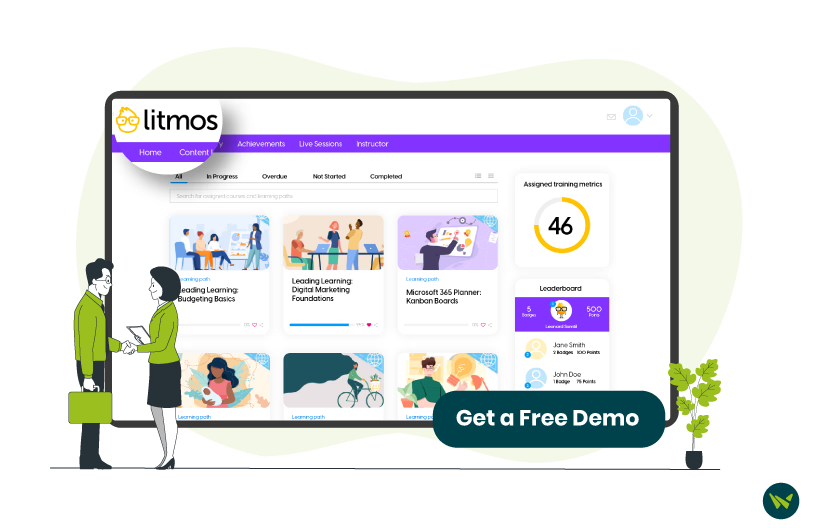
Litmos is a cloud-based LMS built for businesses that need efficient and scalable training for employees, partners, and customers. It is especially useful for accelerating onboarding, improving job-specific skills, and delivering compliance training with built-in content on safety, ethics, and privacy.
The platform includes AI tools, automation, and detailed reporting, making it easier to manage and track training outcomes. Litmos is widely used across industries like healthcare, finance, and retail and supports global workforces with multilingual content and user-friendly features.
Unique Feature Of Litmos
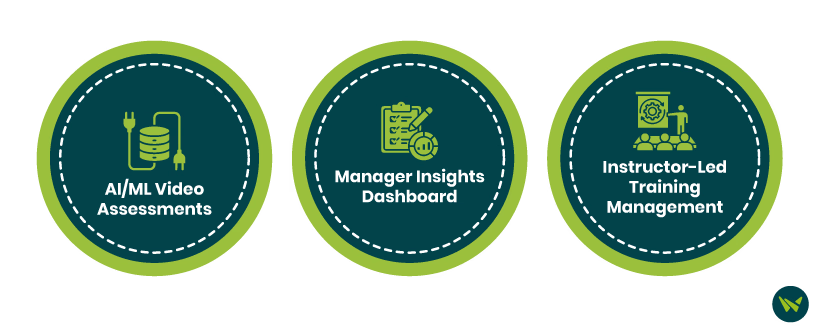
- AI/ML Video Assessments: Leverages artificial intelligence to evaluate video responses and offer quick, automated feedback on communication and expression
- Manager Insights Dashboard: Managers get real-time access to team training metrics, including compliance status, overdue tasks, and progress trends
- Instructor-Led Training Management: Easily manage live training with built-in tools for scheduling, tracking attendance, and overseeing both in-person and virtual instructor-led (ILT and vILT) training sessions
Pros And Cons Of Litmos
Pros
- Offers a clean and easy-to-use interface for both learners and admins
- Allows quick course creation with a built-in authoring tool
- Supports learning by providing access across multiple devices
Cons
- Content is hard to adapt and update alongside changing business needs
- Reporting is not intuitive, and key reports are hard to locate or use
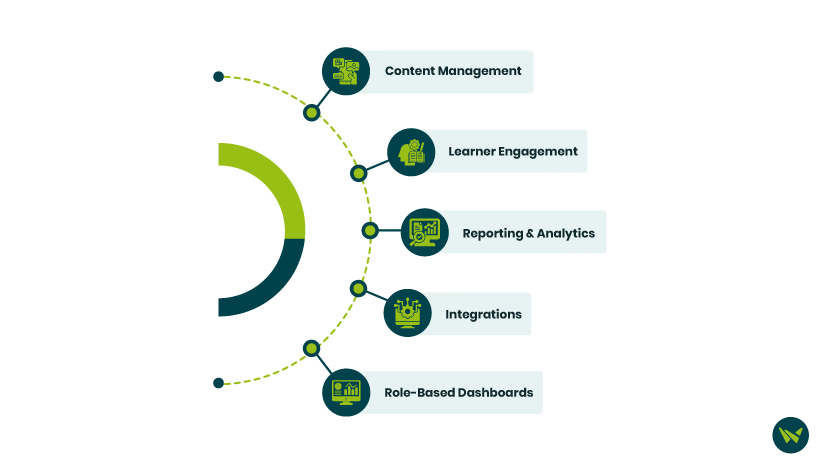
Both Moodle and Litmos offer robust learning management capabilities, but they serve different types of organizations with varying needs. However, the right choice between Moodle vs Litmos depends on your goals.
Moodle is a highly flexible and open-source platform ideal for educational institutions and organizations that require full control over customization, integrations, and advanced security settings. Litmos, on the other hand, is designed for businesses that prioritize fast deployment, employee engagement, and built-in training content.
In the end, your decision should align with what helps you achieve your learning goals. However, if you need a more personalized suggestion in choosing between Moodle vs Litmos, feel free to reach out to us for guidance.
